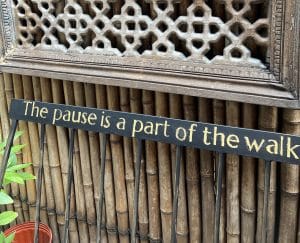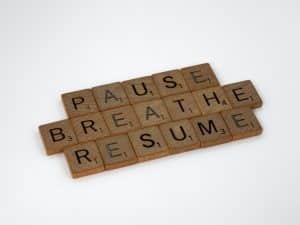
Last week, I confessed that I have trouble sitting still. Not just in meditation, but often in meditation. Part of the reason is that I like movement, and the other part is that I’m just so used to being busy that just being without the “busy” feels awkward. Not only am I accustomed to my body always having a reason to move, but my mind thinks it has some pretty important places to go, too. If I can’t sit still for ten minutes when I’ve got full permission from myself and my schedule to do so, then asking my mind to do it seems a little ridiculous, yes?
The MBA lifestyle doesn’t allow for much downtime. There are more options for packing your calendar than one person could fit into a lifetime, let alone a day or a week, or even a semester. That doesn’t change much after graduation, and if you look at the average daily agenda that brought you into the MBA experience in the first place, you’ll probably begin to notice a pattern. Busy equals accomplishment, importance, and “maximizing” every opportunity. FOMO doesn’t go away after high school. We keep saying yes because we’re afraid not to, afraid to stop moving, and afraid of missing out. Spending time not doing anything seems irresponsible, and almost ungrateful for the opportunities around us. But as you know from your own mindfulness practice, life’s most important moments often happen in the space between. Between breaths, between movements, in the moments when we least expect something significant to happen, the simplicity of something we nearly missed brings us great insight or meaning. You have to be paying attention, and often, you have to be still to notice.
Research has shown that regular downtime can actually increase productivity, as well as general happiness. It’s important to give our brains, bodies, and especially our nervous systems a break from performance mode. As you may well know, however, that can be easier said than done. For many of us, the work of our lives can be reduced to a device not much larger than one of our hands. We don’t take five steps without it, and often, our attempts at relaxation involve merely shifting our attention from one feature of it (email, doc review) to another (social media, web searching), which keeps us focused externally, and may not actually even be physiologically relaxing.
I get it, though. It’s hard to look away when there’s a whole world of stories, opinions and cat videos out there to check out. But if you really want to see the benefits of downtime in your life, then you – well, both of us – are going to have to learn how to sit still.
Mindfulness is designed to teach us how to be, and to appreciate the present moment for the sensations and experiences it actually holds. At times, the abilities it cultivates can make us better decision makers, more creative problem solvers and stronger leaders. When the present moment calls for dialing it down a few notches, that same mindfulness muscle can help you do just that. Sit down, and take a breath. Let your body rest, notice your surroundings, and really listen to someone who matters to you talk. Recognize that being is separate and different from doing, but in our modern lives, it may in fact be more challenging. But that’s never stopped you before, has it?
Photo credit: Sven Scheuermeier




3 thoughts on “What not to do”
Pingback: No-Fail Friday: Unplugged | MindfulMBA
Pingback: Nice recovery | MindfulMBA
Pingback: No-Fail Friday: Up to you | MindfulMBA